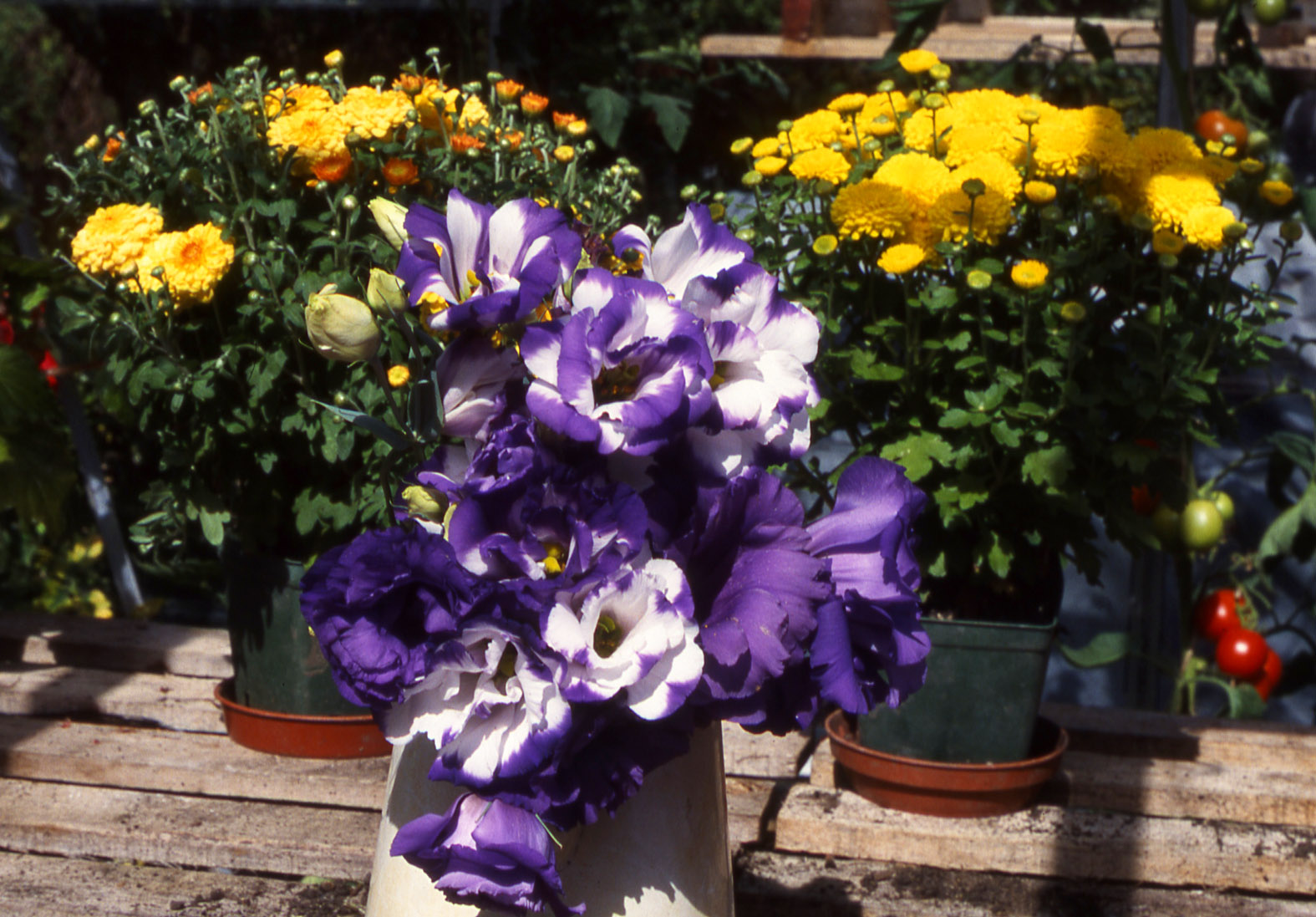These are amongst the most elegant of all greenhouse flowers. Almost perfectly designed for cutting Japanese roses will keep fresh at least a fortnight even three weeks. Indeed if these were just that bit easier to start off we all would have them. I must admit they’re a little on the awkward side with a death wish whilst young but once they’re growing away they’re okay.

Japanese roses are started off like most half hardy annuals and sown sparingly in trays in a warm propagator in early spring. They’re not as robust as say French marigolds and need nurturing until big enough to carefully transplant into individual pots. Some suppliers now offer small plug plants and these avoid this the trickiest early part. These can be potted on once received and once the plants start growing away they become much tougher. They do require warmth, indeed they love heat, though not high humidity, and they want a well drained near ericaceous compost preferably enriched with leaf mould. Most importantly though and their only tricky point, is their roots must never ever be wet, waterlogged or even just too damp especially when young.
But given that care then they are fairly straightforward to grow and come summer produce tall stems with the most exquisitely perfect blooms rivalling tulips. These are best taken for cut flowers so the plants can throw more. Some purveyors claim you can plant Japanese roses outdoors for the summer in a hot dry sun baked border or in tubs on a sun drenched patio -to be realistic they’re safer kept under cover which will prevent the rain rotting them or damaging their blooms. Although these just might be over-wintered or small plants taken from cuttings as with so many half hardy annuals these are better simply discarded at the end of the season and a new batch started the following spring.
Originally from Texas these have long been admired for their beauty and grown by connoisseurs but recently have become more and more popular with high class florists with whom they’re much in demand. Without doubt the original in pale blue mauve is the most elegant though breeders now offer seed giving single and double flowered forms in cream, blue, purple, green and even pinkish coloured blooms, usually sold as mixtures such as the ABC and the Laguna series. I strongly recommend you start with the original, preferably as plug plants, and move onto the seed grown mixtures only once you have grown used to raising this delightful plant.
Unfortunately the Latin names are confusing. Once combined with Tachia the Japanese rose is from the Gentianaceae and known as Lisianthus (sometimes misspelt Lisianthius). This name still hangs on though the nomenclatural botanists have moved the genus to Eustoma. There are several related though less spectacular species but the Japanese rose is by far the best. This was Lisianthus Russellianum and now must be known as Eustoma grandiflorum….










